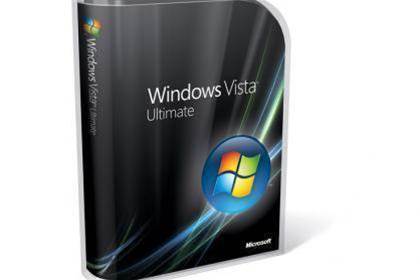More than 10 years after it arrived on PCs, Microsoft is finally laying to rest the much-unloved Windows Vista.

The operating system will no longer receive any updates or patches, and users have been urged to move to a newer operating system or risk security threats.
“Microsoft has provided support for Windows Vista for the past 10 years, but the time has come for us, along with our hardware and software partners, to invest our resources towards more recent technologies so that we can continue to deliver great new experiences,” the company said.
Systems running the operating system will still work, but will become more vulnerable to security risks and viruses.
Internet Explorer 9 is also no longer supported.
"So if your Windows Vista PC is connected to the internet and you use Internet Explorer 9 to surf the web, you might be exposing your PC to additional threats”, Microsoft said.
Microsoft has also stopped providing Microsoft Security Essentials for download on Windows Vista.
Users can purchase a full version of Windows 10 to upgrade, but should first make sure that their systems can run the new operating system.
Vista was launched in 2006, a few years later than the promised launch date of 2003.
When finally released, the OS suffered from the get-go with slow performance and a User Account Control security feature that popped up virtually every time a user wanted to do anything.
The issues prompted Microsoft to rush Windows 7 out, which fixed a lot of issues and was greeted with much relief.
Usage
Old versions of Windows are still running on user desktops and Vista is no exception.
According to figures from Spiceworks, 14 percent of medium-sized organisations are likely to have at least one Windows Vista machine still hanging on, and 13 percent of manufacturing firms and government bodies specifically are still using Vista.
“Windows Vista isn't nearly as common in business as Windows XP, but the approaching Vista end of support date serves as a good reminder to upgrade PCs still running unsupported operating systems,” said Peter Tsai, senior technology analyst at Spiceworks.
“Although some IT departments aren't able to upgrade on time due to a lack of time or budget, it's critical for IT professionals to make a business case for more resources, given the security risks of running operating systems with unpatched vulnerabilities.”
Windows XP (52 percent) and Windows Vista (9 percent) penetration rates, defined as the percentage of companies running one or more instance, are still relatively high. However, their overall share within the business environment is much lower.
The Spiceworks data shows Windows XP is running on 14 percent of all PCs in businesses worldwide, while Windows Vista is only running on 1 percent.
By contrast, Windows 7 has the highest share, running on 69 percent of business PCs. Windows 10 currently has 9 percent of the overall share, followed by Windows 8 at 5 percent.

_(22).jpg&h=140&w=231&c=1&s=0)


.png&h=140&w=231&c=1&s=0)



_(26).jpg&w=100&c=1&s=0)

 iTnews Executive Retreat - Security Leaders Edition
iTnews Executive Retreat - Security Leaders Edition












_(1).jpg&h=140&w=231&c=1&s=0)



